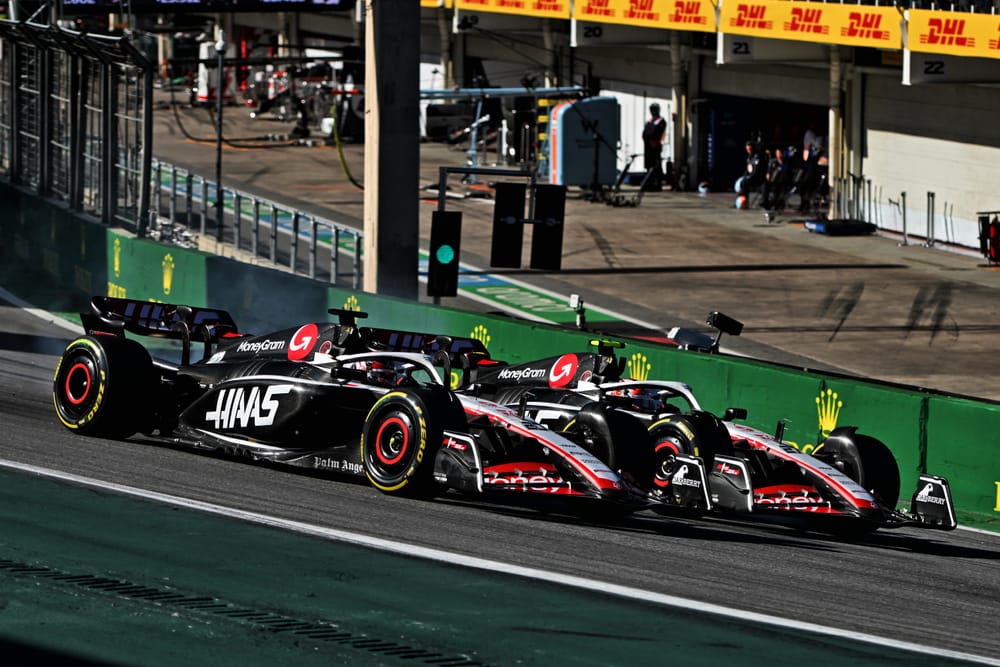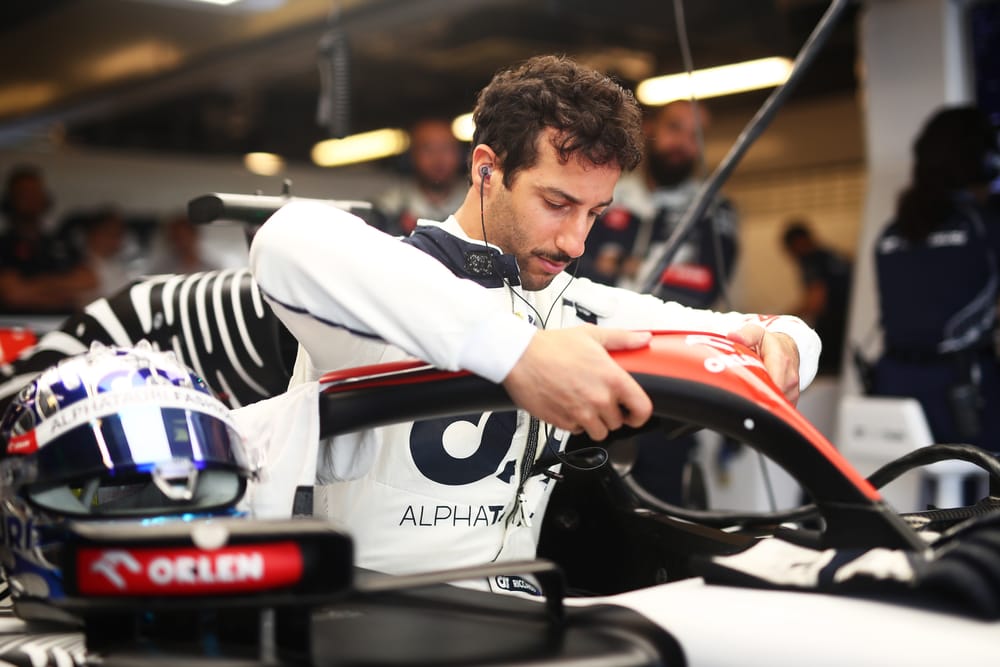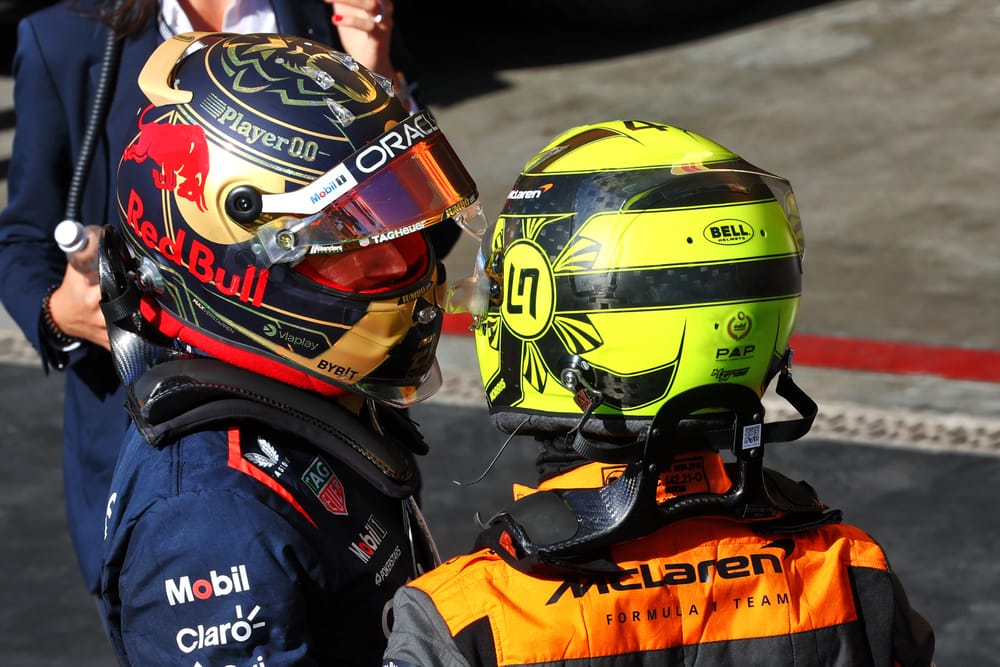Up Next

One of the most evenly matched Formula 1 team-mate pairings on paper resulted in a pummelling in 2023, leaving the driver on the receiving end facing a pivotal 2024.
There are echoes of Daniel Ricciardo’s difficulties at McLaren in the tricky situation that Kevin Magnussen finds himself at Haas.

Nico Hulkenberg was brought out of the wilderness to partner Magnussen for 2023 and the expectation was this would be a close pairing, even if qualifying always seemed likely to go in Hulkenberg’s favour for he is more likely to produce one-lap heroics.
That comparison became shockingly one-sided, though. Magnussen was destroyed by Hulkenberg on Saturdays, losing 14-6 in comparable sessions with an average deficit of 0.284s, while Hulkenberg’s average grid position was 12.3 to Magnussen’s 15.1.
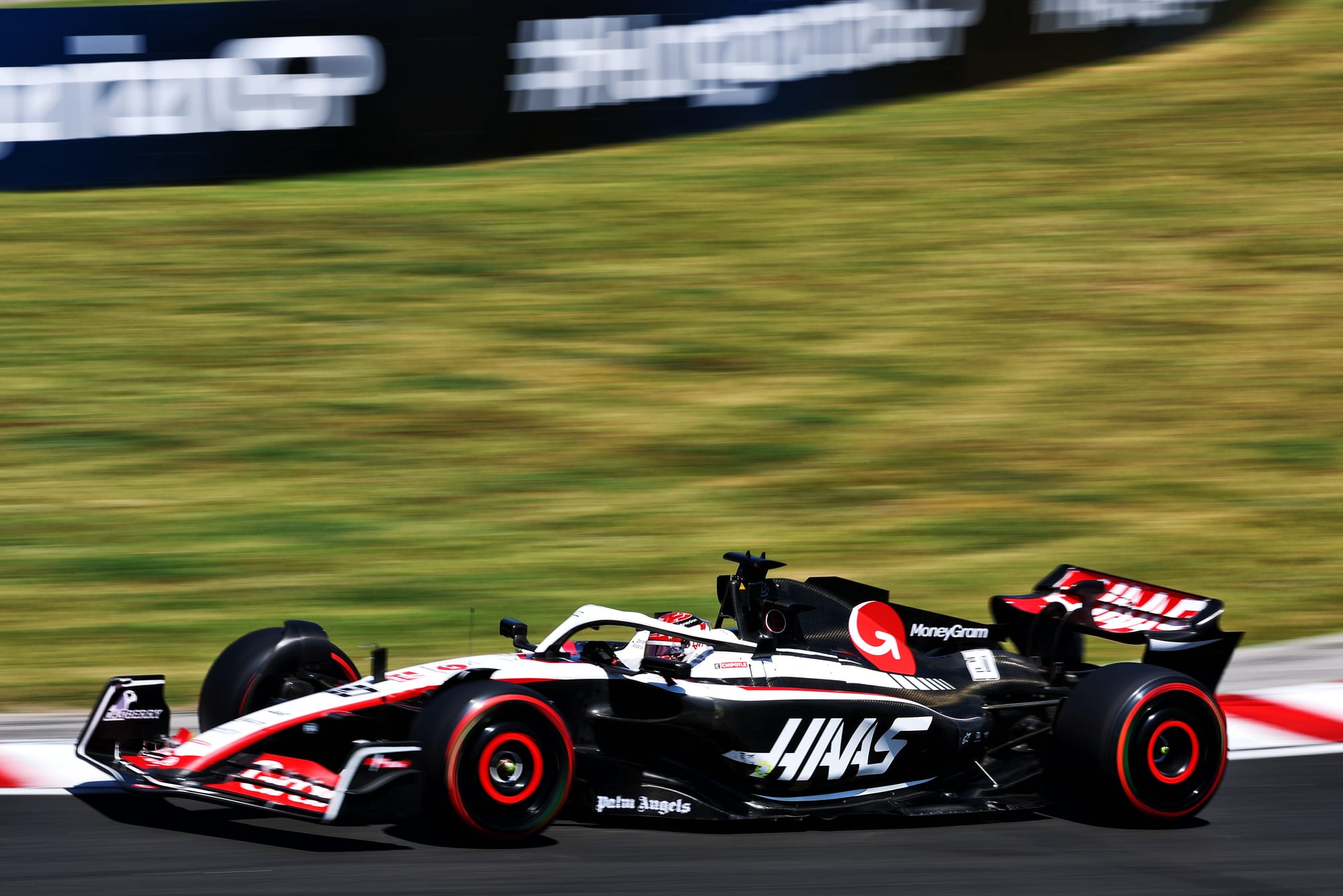
Though you could have a different debate about their relative merits as drivers, this 2023 result was not because Magnussen is that much worse than Hulkenberg. It comes down to fundamental differences in driving style.
The rear of the Haas moved around a lot, which Hulkenberg is typically better at dealing with. Whereas Magnussen prefers to have a bit of understeer in the car, giving him the stability to brake late into a corner and be aggressive with his steering inputs.
There are broadly two approaches to slow and sometimes medium speed corners, which are the ones with all the costly laptime in them: ‘U’ it, which means a longer, more gradual rotation through the corner with a higher minimum speed, or ‘V’ it, which means to have a harsher and sharper rotation mid-corner with a lower minimum speed.
Each approach has pros and cons. But different driver preferences mean coping with the approaches differently.
For example, Magnussen reckons the VF-23 exacerbated the ground-effect era’s tendency to make the combination of braking and turning on entry very difficult. That pushes the drivers more towards the ‘V’ style than the ‘U’. But then driver preference comes into play – the ‘V’ style requires a sharper mid-corner rotation, and Magnussen’s late-braking and more aggressive steering approach unsettles the rear too much.
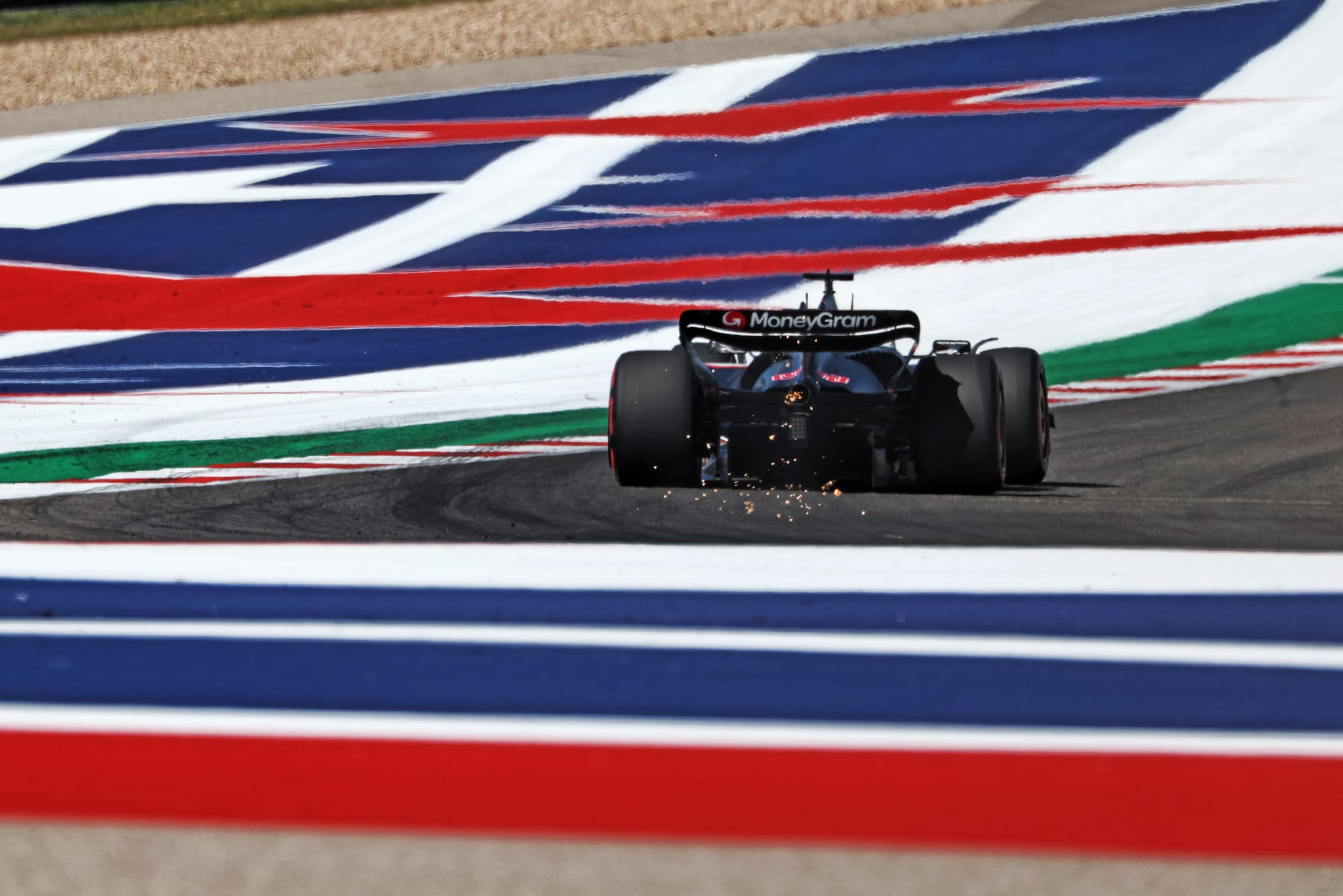
The longer the corner radius, the more Magnussen would struggle. There’s clearly something in the Haas that hurt him but it’s also, to a greater or lesser extent, a feature of this era of ground-effect cars.
“You can't really combine Gs so much with these cars,” Magnussen said during 2023.
“Also, a big part of it is the tyres. You can't do a lot of rotation and braking at the same time.
“You have to V the corners more. There's many different variations of these two [V or U], but in broad terms that's what I find.
“And this year's car, on our side, is even more vulnerable like that.”
In that sense, Magnussen has found himself in a similar situation to what Ricciardo encountered at McLaren. His natural style is blunted, and he has struggled to adapt, while his team-mate has not suffered the same fate and has dealt with the car’s demands better.
And while some drivers find it easier than others to adapt their driving, many struggle to detach from an engrained technique, or adjust their tolerance to a certain degree of instability. Especially as these are characteristics that materialise in the real world, and are much harder to replicate on a simulator, so opportunities to practise new approaches are limited.
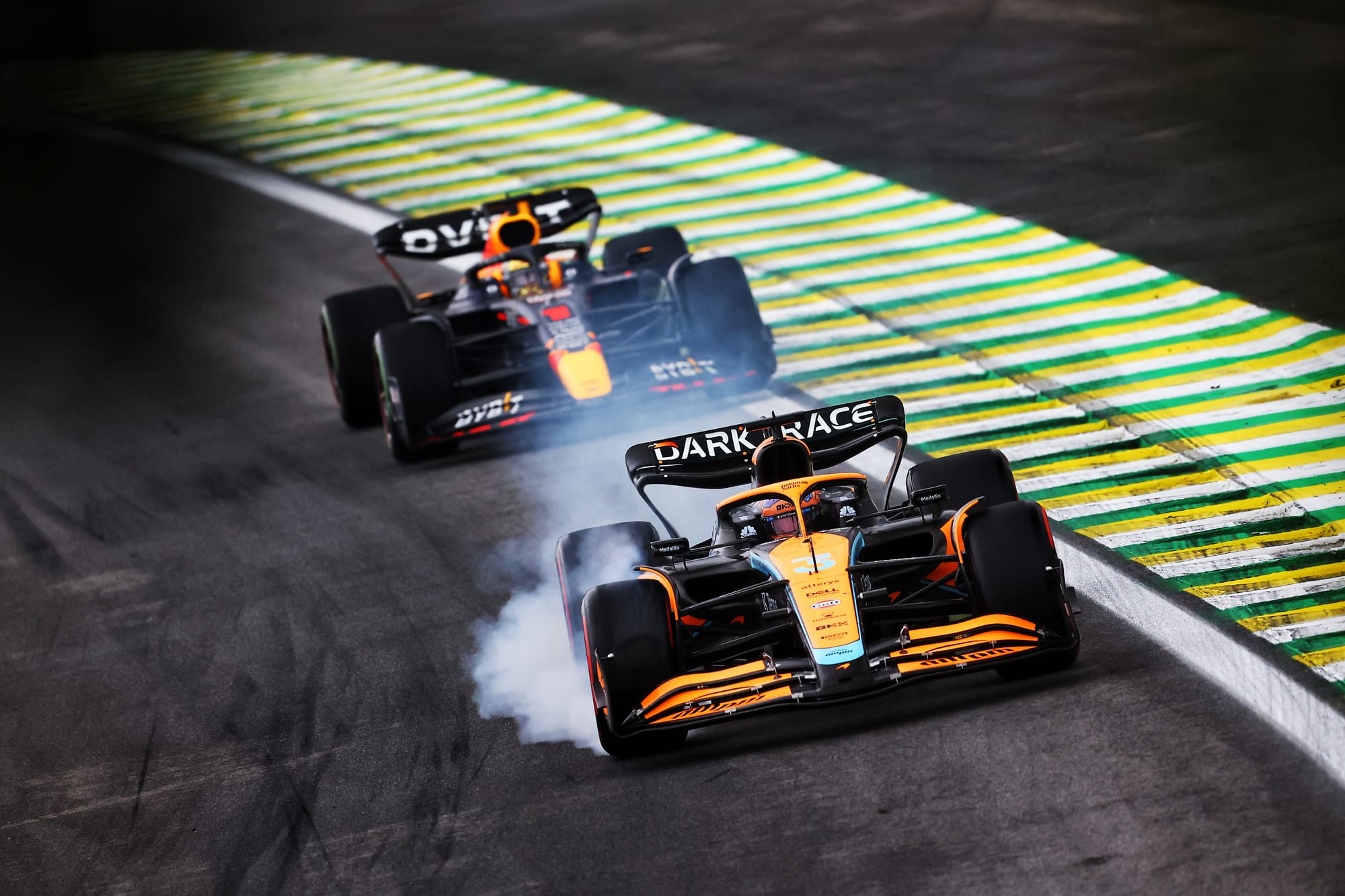
Ricciardo famously went back to basics as McLaren attempted to rebuild his driving style to suits its car’s demands. Magnussen has avoided going down a similar path – maybe for the better, given how badly it went for Ricciardo – and drew an interesting comparison to golfing a golfer adjusting their stroke.
“If you are trying to change the angle of your wrist, just a couple of degrees at an exact point in the swing, the moment is gone, you've done it, and it's very hard to adjust these things,” he said.
“It takes 10,000 hours before you've done it, because it's really something in our central nervous system, and being done very automatically.
“Often, it's best not to try too hard to change those things, but actually find ways around it.”
Ricciardo eventually came to admit that his struggles with the McLaren exposed a limitation in him as a driver. Magnussen is not at that point. He considers himself good at adapting and reckoned mid-season the car was “unstable in just the worst part of the corner”. His focus was on changing “some things in the car” – most likely related to brake and differential settings – so that the car suited him a little bit more but also so he could drive the ‘V’ style more easily as well.
Whether it worked or not…there is not a convincing argument. The numbers suggest not. Magnussen felt in Singapore, where he scored a point from sixth on the grid, that it was some reward for the effort put in by him and his side of the garage to make that hybrid solution work.
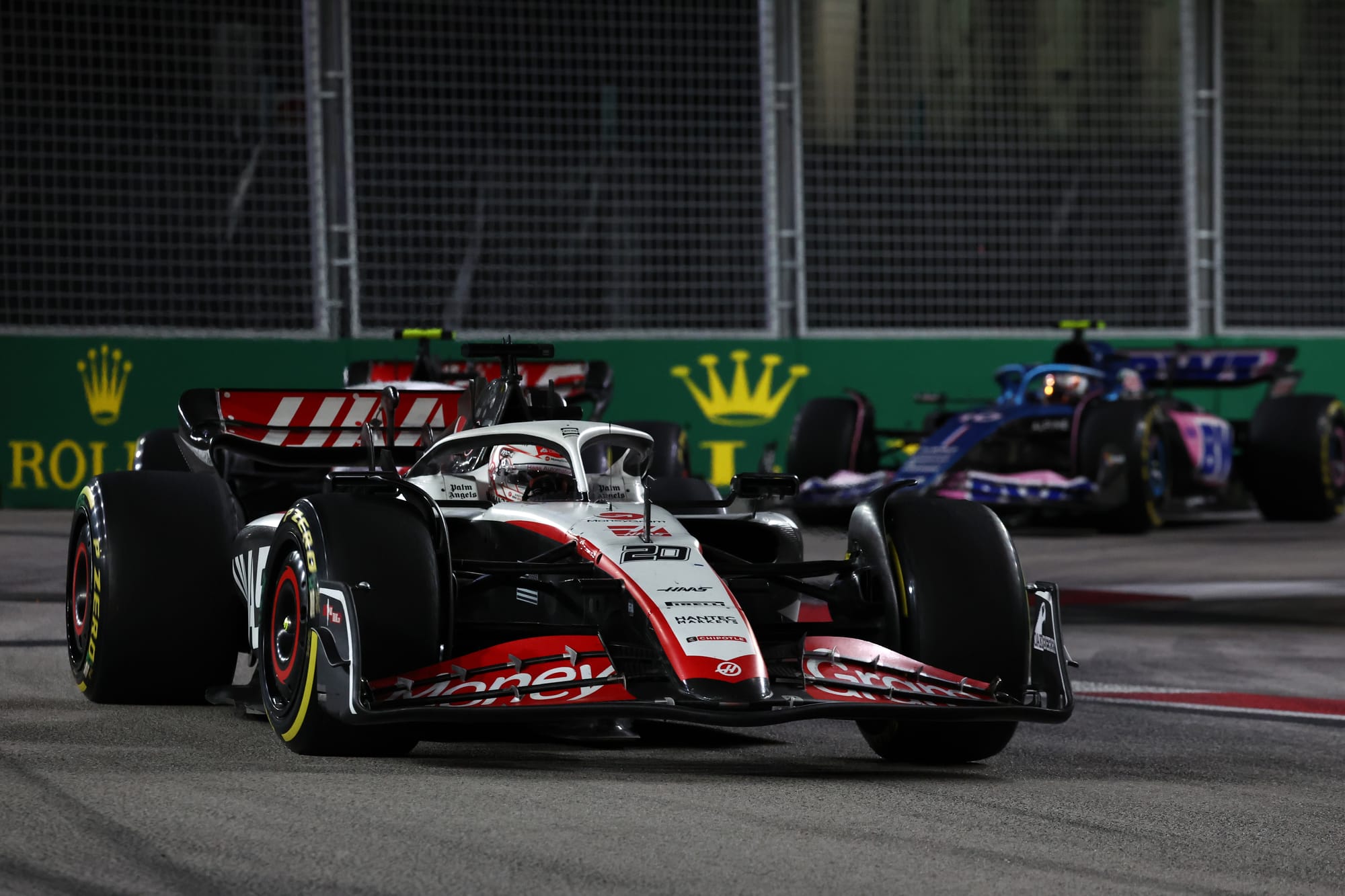
“Now I have something to show for it,” he said. But he also admitted that the street track mitigated his biggest problem. In fact, street tracks were Magnussen’s relative forte in 2023, with track layout combining nicely with the fact the car tends to be more settled with some safety understeer dialled in.
“I can just drive how I naturally do, especially with this track being not so many long radius corners, more like 90 degree angles,” Magnussen added.
“That’s more like my corner.”
Ultimately, the issue was at least partly influenced by the total absence of progress with the VF-23 through the year. Perhaps a more effective development plan would have alleviated the worst of the car’s traits that Magnussen struggled so much with.
Again, that chimes with Ricciardo’s McLaren situation – he was adamant McLaren could have pursued different developments to aid driving the car but didn’t get the upgrades he wanted to help his specific situation.
If there was a silver lining for Magnussen it’s that (as with Ricciardo) the difference was at least less obvious in the races when the cars are heavier and more settled. Magnussen looked better on Sunday. Although another, more costly Haas characteristic – the fact it had a tyre-chewing Sunday car – still helped save Magnussen from a bigger points deficit, as Hulkenberg could not hold onto the highest qualifying positions he earned.
They finished the season with uninspiring points totals - Hulkenberg 9, Magnussen 3. A similar return will reflect worse on Haas in 2024 than it will either driver but Magnussen faces an obvious challenge to re-assert himself too.
His surprise comeback in 2022 started brightly but familiar limitations became more prevalent as Haas’s competitiveness dropped. Then, even though the circumstances were difficult, Hulkenberg gave him nowhere to hide in 2023.
Whether it’s a ground-effect era phenomenon or a specific Haas weakness, Magnussen will probably not survive another ineffective year falling some way short of the car’s potential. Ricciardo didn’t at McLaren.


